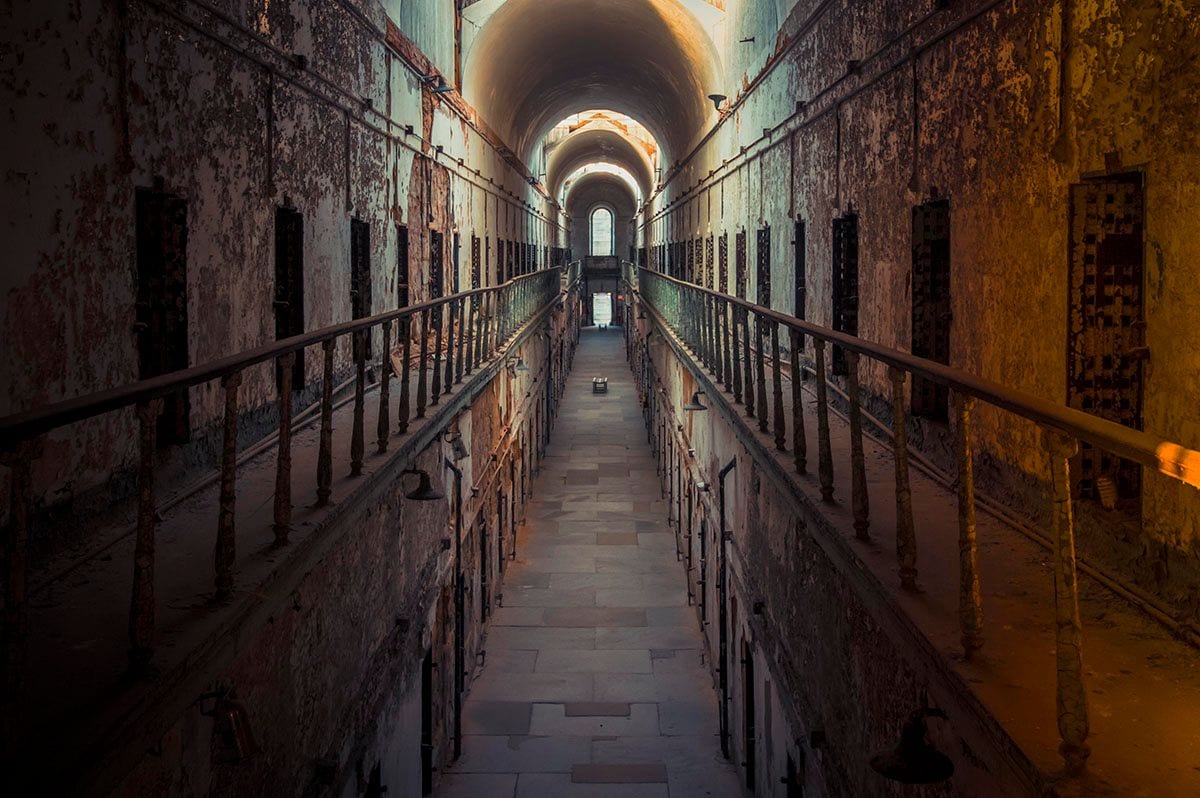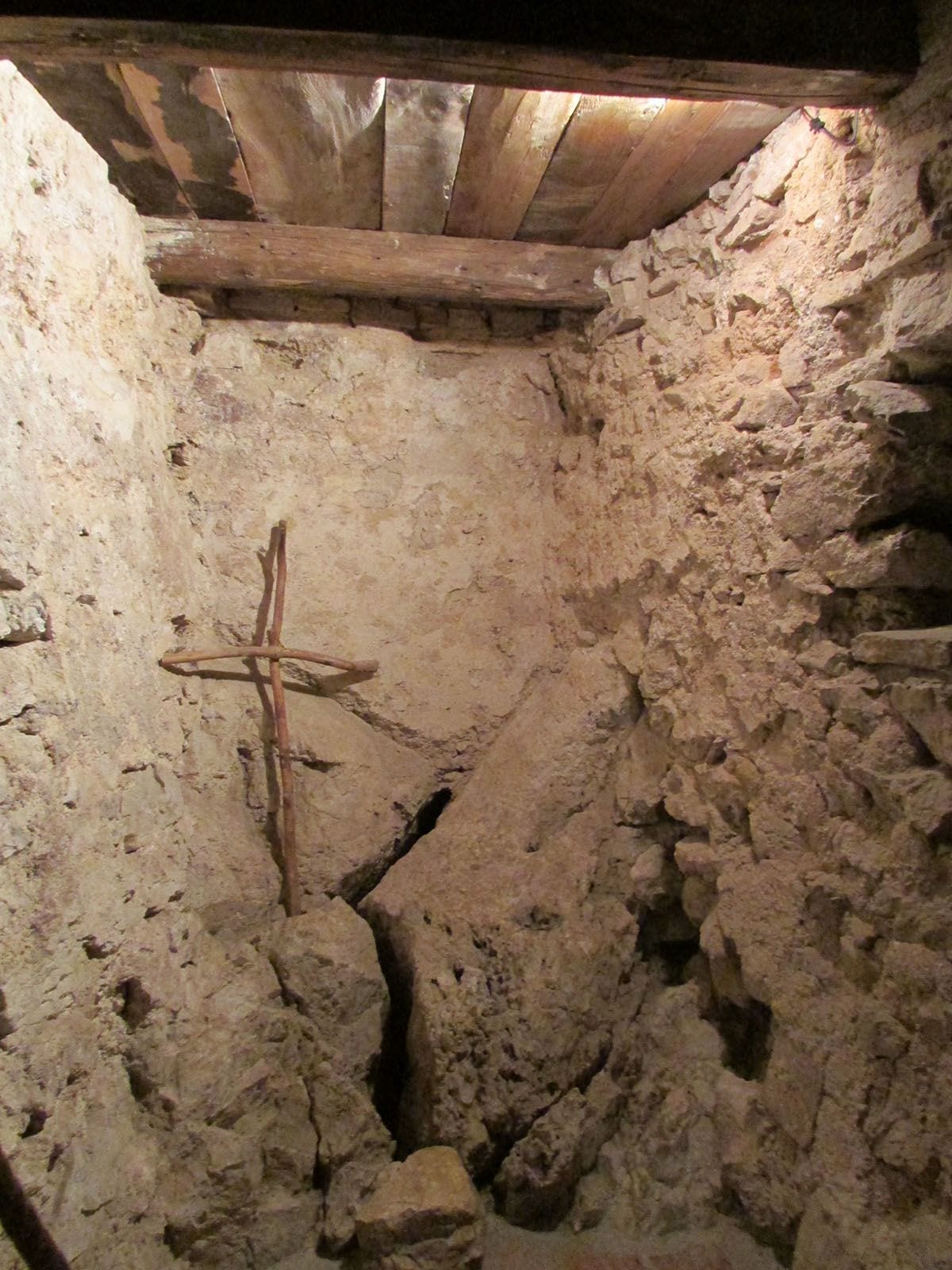
“Shhh, silence please.”
Go ahead: What’s your first reaction? Do you picture yourself inside a library negotiating cell phone etiquette with a clerk? Who, me? What did I do wrong? Or, maybe you’re at a meditation center, a loosely robed leader ushering you through two familiar steps: (Breathe in.) Find your inner peace. (Breathe out.) Let the world go.
In Silence: A Social History of One of the Least Understood Elements of Our Lives, Jane Brox clarifies why her subject runs deeper than the mere absence of sound. Whether silence is experienced as a reprimand or invitation differs depending upon context and intention. Throughout her lyrical scholarly work, Brox explores how the meaning of silence is shaped by circumstances, contrasting two primary perspectives: that of prison inmates with monastic monks.
Silence begins with a visit that the author takes to Philadelphia’s Eastern State Penitentiary. Surrounded by a cold November light, Brox saw “the detritus of what had once been a dream of order” still standing after its construction in 1829. Envisioned by Founding Father Benjamin Rush, the prison advanced ideas central to the American Enlightenment. As an intellectual and social reformer, Rush supported causes including the abolition of slavery, improved education for women, and a more progressive penal system. Designed according to the spirit of its time, Eastern State Pen combined society’s needs for justice and punishment with the goal of reforming the souls of its offenders.
Yet behind Eastern State Penitentiary’s granite façade and massive double entrance doors—the pair of which weigh several tons—lies a more complicated story. The intake of new prisoners might have resembled a scene from an abduction. After being stripped of their civilian identities—street clothes removed; hair cut short—inmates were escorted to their cells with a hood over their heads, a practice meant to foster isolation.
Hand in Water by TheDigital Artist (Pixabay License / Pixabay)
Within solitary confinement, silence lingered as a reminder of an unfaltering penal system. The controlled environment aided in surveillance, allowing the guards to hear whispering among the inmates. Yet acts of resistance voices proved difficult to contain—something subdued only by gagging. Hoping to catch inmates talking, patrolling guards muffled their footfall by wearing socks over their shoes. But the human spirit remains resourceful. Inmates developed discrete ways of communicating through the plumbing or heating vents. Some even trained pets, passing rats or mice carrying messages back and forth through pipes in the cell walls.
For those confined in a cell the size of a modern-day parking space, time became a shapeless element. Inmates gauged the day’s passing by a slot in the cell door which slid open at meal time. Elsewhere, in Maine State Prison at Thomaston, the cells were dug underground; a sliver of light from a small overhead window was a blessing for a prisoner, and the only reminder of the outside world.
Unlike the view inside a subterranean cell, Quakers in 19th century England basked in a different type of light. George Fox, the founder of Quakerism in England, instructed his followers to “stand still in the Light”; that is, an illumination sourced not from the sun but from divinity. Waiting patiently for a divine voice in their meetinghouses to speak to them, the act of listening, for Fox’s congregation, became a loving act of worship. As Quaker theologian Caroline Stephen stated, the goal of their spiritual devotion was “a resolute fixing of the heart upon that which is unchangeable and eternal.” The Light of God, they believed, takes only a silent heart to receive it.
Monastic monks have also experienced silence as a devout calling. Though hardly correctional facilities, monasteries embody another type of order. A monk’s lifestyle is willfully austere and their days are highly regimented. The ascetic silence that they abide by becomes a symbolic threshold, which one enters and exits purposefully. As Brox explains, “both silence and the breaking of it are considered sacred.” The pervasive quietude of monastic life is punctuated by canonical hours of prayer; and bells serve as clocks, their periodic ringing summoning the congregation to the next devotional event. Every ritual and routine offer an opportunity for union with God.
Eastern State Penitentiary. Photo by Thomas from Philadelphia Area, USA – Cell Block 7 (CC BY-SA 2.0 / Wikimedia)
For both Quaker congregations and monastic communities, God’s presence took an ephemeral form. Historian Emma Hornby describes the etymology of the word ‘spirit’ within Judeo-Christian heritage, “Both the Hebrew and Greek words for ‘spirit’ also mean ‘breath’ or ‘wind’ and, in Christian teaching, the Holy Spirit is said to have come to the disciples first as a ‘wind.'” In devotion to God’s ever-present Spirit, monasteries cultivated a state of spiritual vigilance. Some monks used a specialized sign language to request more food during meal times. Encouraging a selfless language, adjectives declaring types of relationship—possession, parents, or property—were forbidden from use.
Outside of the cells of prisoners and monks, other social groups have suffered a different forbiddance. Women throughout history have been subjected to silence as a tool of suppression. Under 16th century common law in the English Midlands, a woman’s legal status was suspended during her marriage. Furthermore, for the then social offenses of bearing a bastard child or for gossiping, women could be severely punished, their tongues fastened with a cleft stick or a scold’s bridle!
Even spiritual communities have made dogmatic discriminations based upon gender. Some nunneries were geographically separated from monasteries by rivers; and when nuns and monks shared the same space, women were symbolically separated from their male counterparts by metal grilles during Mass. Furthermore, nunneries’ equal access to resources, such as reliable sources of water, might be disregarded by the Church.
Section of the first Monestary. Santuario di Greccio. (By Chris Light – Own work, CC BY-SA 4.0 / Wikimedia)
Trappist monk Thomas Merton understood the limitations of authority. When faith is separated from a universal expression of love, he warned that solitude risks turning from a virtuous lifestyle into an intolerable luxury. During an era of civil unrest in the 1960s, the Catholic Church forbid Merton to write about secular subjects such as war and civil rights. After being censured by his own monastic community, Morton questioned the purpose of a vow of obedience which doesn’t allow for “the love of His [God’s] truth and of our neighbor.” Believing that a monk is responsible for rectifying his relationship with the world, Merton’s personal convictions led him to break his vow to the Church. Merton writes boldly about this re-evaluation, “the monk is somebody who says in one way or another, that the claims of the world are fraudulent.” Despite its service to divinity, the Church, as Merton addresses, is not immune to human limitations.
The difference between a prison and a monastery cannot be reduced to a two-ton gate or a special sign language. Twelfth-century abbot and theologian William of St. Thierry understood “how one’s state of mind, one’s heart, one’s beliefs, determine whether solitude and silence engender spiritual growth or despair.” While prisons and monasteries both support self-transformation, one reconciles self with society through punishment and rehabilitation, the other unites self with divinity for purpose of salvation. Either condition can lead to transcendence or succumbing to depravity.
Under Brox’s keen work, one of the least understood elements of our lives proves to be an ambiguous subject. As she reminds us, “It [silence] presents the opportunity for a true reckoning with the self, with external obligation, and with power.” In the United States of America of the 21st century, there are currently up to 80,000 inmates in solitary confinement at any one time. And beyond the prison walls, some law-abiding citizens across the world continue to experience the weight of silence as suppression. The danger is now clearer, though no less dire: Solitude, without connection to the world, can lapse into isolation; silence, without freedom, into muteness. And either, when given the circumstances, can collapse into an assault on humanity.
So, what does silence mean? Depends upon what side of the locked door, sworn vow, or social hierarchy we find ourselves on.
“Shhh, silence please.”




